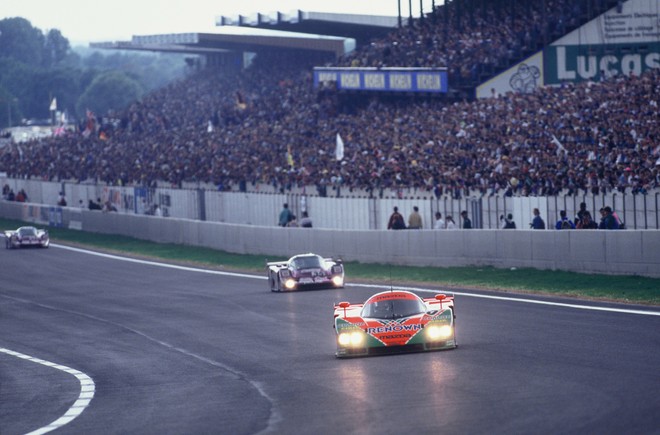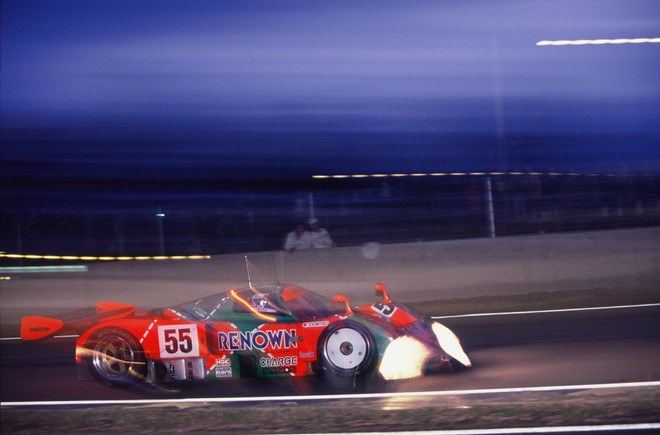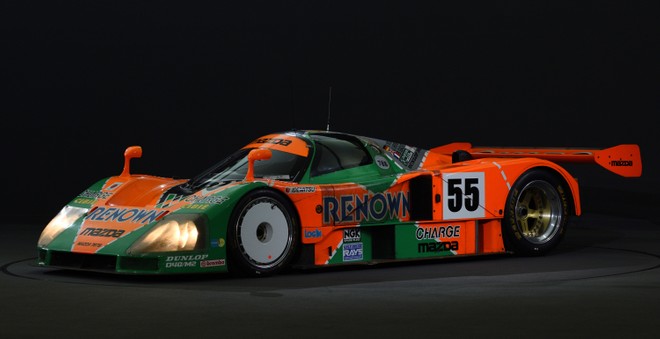
Next weekend is; scene l & # 39; 89 & deg; edition of the legendary 24 Hours of Le Mans – after the postponement decided last March. And this year marks a very special anniversary for Mazda and its history: thirty years ago, to be precise at 4pm on Sunday 23 June 1991 , as Johnny Herbert drives down the Mulsanne straight in his Mazda 787B , he receives an amazing news via radio from the team: he and his teammates are about to win the most; difficult and famous race in the world of endurance. This is a historic victory to say the least: no other rotary engine carhad never before won the classic of the Sarthe and & egrave; also the first success of an Asian manufacturer.
The checkered flag waves at the arrival of car n & deg; 55, with its rather eye-catching orange and green livery and the unmistakable roar of its Wankel engine equipped with four rotors.
Herbert, exhausted from fatigue, & egrave; seized by an illness and is hospitalized in the emergency room, forced so & igrave; to skip the podium ceremony because & eacute; is hospitalized in the emergency room.
That important victory continues to fascinate racing and rotary engine enthusiasts. The Le Mans race, in addition to being the most ancient endurance race in the world (the first edition was held in 1923), still today it is; considered the most challenging than ever.

In the 1991 edition the competition & egrave; tough: Jaguar aims to repeat its 1990 triumph, while Mercedes tries to follow up on its 1989 claim after a year of absence. Peugeot has a big budget and is aiming for a new home win at La Sarthe after that of 1980. Porsche races with the Joest team, backed by the manufacturer, and then there are some private teams that in total bring the number of cars to 15. Group C cars in the race.
About 21 hours after the start of the race, after a long battle against the favorites Mercedes and Jaguar, the Mazda 787B takes command of the race for the first time and never leaves it again; until the end. Three more hours; later, against all odds, Johnny Herbert brings the triumphant Mazda to the finish in front of 250,000 delirious spectators, after completing 362 laps at an average of over 205 km/h.
All three Mazdas participating in that edition, two new 787Bs and one 787 from the previous year, complete the race, finishing in first, sixth and eighth place in the overall standings. Of the 38 qualified cars, only nine finish the race.

The R26B rotary engine of the 787B & egrave ; featuring a unique injection system and three spark plugs per rotor, it produces the beauty of 710 HP (522 kW) at 9,000 rpm. Thanks to that engine, which is also very reliable, the prototype of the Japanese brand is; very fast and the trio formed by Herbert, Volker Weidler and Bertrand Gachot manages to make the most of its potential.
Mazda engineers, after carrying out on the winning engine, the normal routine inspections at the end of the race, proudly state that the R26B & egrave; in such good condition it could run another 24 hour marathon.

The legendary number 55 has been exhibited since the year following the Mazda Museum in Hiroshima after the changes in the regulations that came into force in 1992, which limit the displacement of the engine thus preventing; to the rotary engine to be able to participate in subsequent editions of the 24 Hours of Le Mans.
Since then, there have been occasional appearances of the car such as, for example, at Le Mans in 2011 for the 20 & deg; anniversary of the legendary victory or at the Goodwood Festival of Speed in 2015.
These events always turn out to be special occasions for those who can't wait to hear the unmistakable roar of that engine live: a sound that still today it brings goose skin to all fans of the racing world.
The best Xiaomi for photos without 5G? Redmi Note 10 Pro, buy it at the best price from Amazon at 483 euros .

